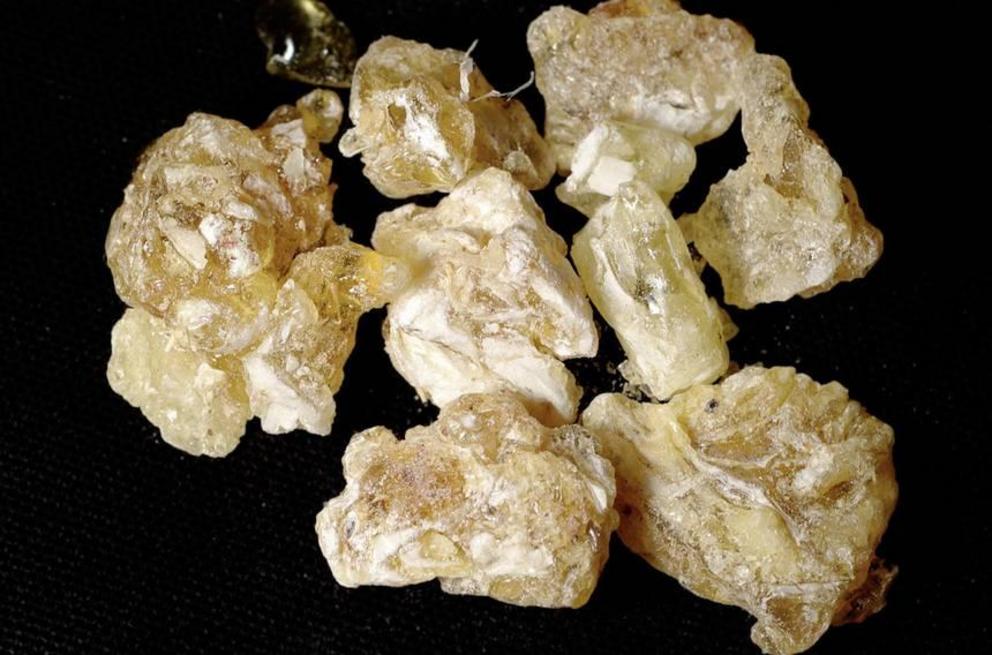Frankincense is endangered
There are fewer and fewer trees that can produce this beloved aromatic resin.
Frankincense may well be one of the oldest luxury goods on Earth. For thousands of years it has been used to embalm bodies, burn as a religious offering, fumigate houses, cure the sick, and beautify in the form of cosmetics and perfume. But new research suggests that it will not around forever, with production estimated to be reduced by 50 percent within two decades.
Frankincense comes from trees and shrubs belonging to the genus Boswellia, grown throughout the Horn of Africa, Arabian Peninsula, and parts of India. JoAnna Klein explains in the New York Times how it is harvested:
"When frankincense tappers make gashes into some species of mature boswellia’s woody skin, sap seeps out like blood from a wound. It dries into a scab of resin, which is harvested and sold raw, or turned into oil or incense."
So the industry's wellbeing is intimately tied to that of the trees, which are not doing too well themselves. In the study just published in Nature Sustainability, the authors explain that most trees are old and dying, and that there are very few young saplings because these are eaten by wandering grazing livestock or burned by subsistence farmers wanting to use the land for agriculture.

Reckless tapping is another problem. Klein writes, "Increasing demand has incentivized poor tree tappers, who make only a tiny percentage of frankincense profit and rely on it for income, to take as much resin as they can in a short amount of time."
As a result, the old tree population is not being replaced fast enough, and unless better management regulations are put in place, such as fencing, an end to burns, and renewable harvesting, frankincense will become an even more mythical substance than it already is.
Customers must also learn about the importance of buying sustainably sourced products: "Buyers at all levels of the supply chain should emphasize quality and sustainable harvesting over quantity to reduce overtapping. And consumers can continue demanding sustainable, socially conscious products."

